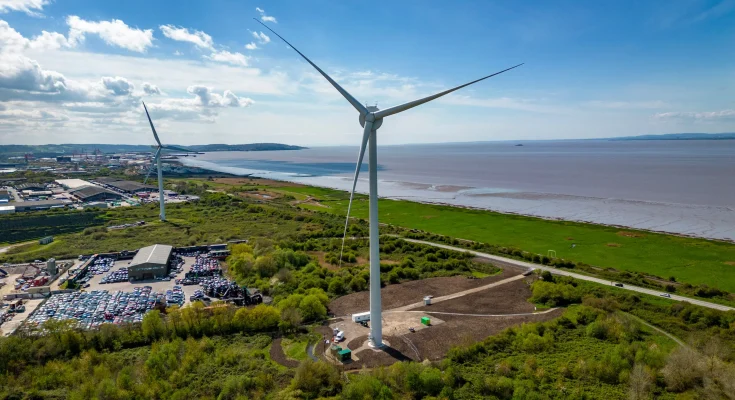Throughout the UK, there are countless wind project success stories, both onshore and offshore. If the country is to meet long-term targets for Net Zero, wind turbines are to play an important role. We are all familiar with the sight of offshore wind farms, but there is a desire to build better onshore wind project locations to help boost the success stories to meet Net Zero. It’s crucial that an onshore wind project is located in parts of the country where it can meet optimum conditions for effectiveness and success. Efficient access and safety solutions in the form of scaffolding and other access options boost safety standards through the construction phase and into maintenance and repair issues. This helps to improve standards at an onshore wind project to boost long-term targets.
The main criteria for a successful onshore wind project
Onshore wind projects can cost millions of pounds to deliver, which makes it incredibly important that they are located in the right places, where performance can be optimised and targets met. Some of the main criteria that are looked for to build a successful onshore wind project include:
Location – onshore wind farms operate best when they are located well away from built-up areas, large towns, and cities. Ideally, they are constructed in wide open spaces or on top of hills and mountains so as not to impact a local neighbourhood with noise pollution. Wind turbines are much quieter in performance than they have been in the past, but it is still a common complaint in locations where they have been built near urban areas.
High-speed winds – to function effectively, wind turbines need access to high-speed winds. This ties in with the choice of location, helping a wind turbine to realise high speeds and performance for maximum return on investment. Mountains, hillsides, moorlands, and large open spaces are ideal for onshore wind farms, where there is the chance for an annual average wind speed of 7m/s or more.
Good access solutions – easy access to the wind turbines is a crucial component of a successful onshore wind project. Safe access through scaffolding, rope access, and other types of safe access solutions helps during the construction phase of the project. Once operational, there is a requirement for regular inspection, maintenance, and repairs.
Lack of environmental restrictions – it’s important that renewable energy projects are not located in areas where they will damage local natural habitats and the environment. Consider whether the land is located in a designated national park or area of outstanding beauty, and whether the project will not pose a threat to animals or vegetation in the area.
To meet long-term targets for Net Zero in the UK it’s important to leverage renewable energy wherever possible. Onshore wind projects provide a great way to meet those targets, but in order to be as effective as possible, it’s vital that better wind projects are built on land in a way that optimises performance and increases the energy produced. One of the ways in which onshore wind turbine projects can be significantly improved is by partnering with providers of scaffolding and access solutions, providing efficient access and the highest standards of safety solutions.

